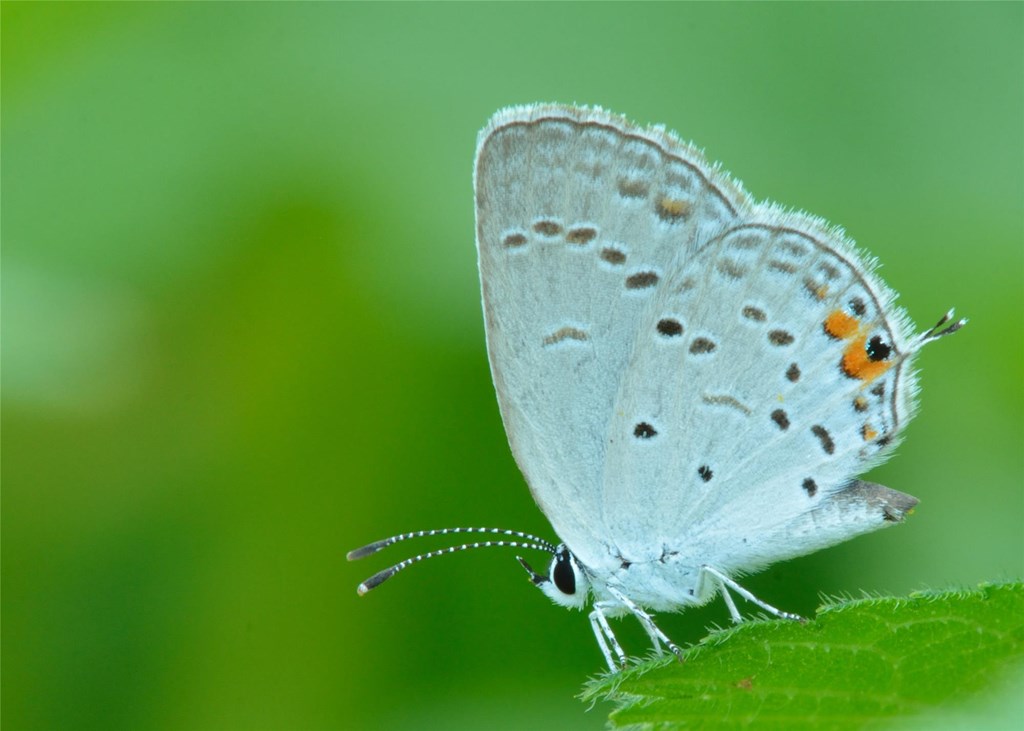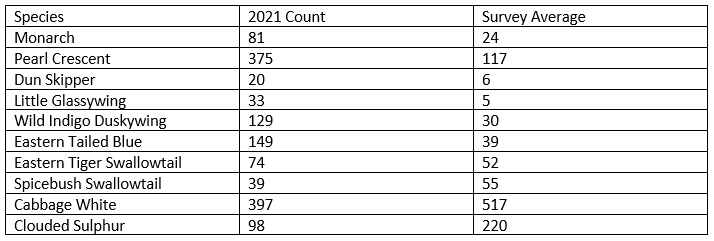Butterfly Count 2021 Summary
Posted on August 23, 2021 in Science

By Bracken Brown, Biologist-Naturalist
On July 10, 18 volunteers and staff set out to tally all the butterflies they encountered in the surrounding region as part of the annual participation in the North American Butterfly Association's summer census. Through the course of the day the teams spent a total of 26 hours surveying 50.5 miles, resulting in an above average year.
Despite the count falling outside the bloom of some of our common nectar sources, surveyors benefitted from blooming monarda, butterfly weed, and coneflowers at some sites. We never know what to expect as weather both on the day and across the season can dramatically impact what butterflies are active. This year, with overcast skies for some of the morning, a fair number of butterflies were roosting and not actively nectaring, which made spotting butterflies a challenge. But as the sun broke through and conditions warmed, they became much easier to spot dancing around patches of bloom looking for a spot to land or a mate to court. This season the species that were close to peak flight were pearl crescents, Eastern tailed-blue, wild indigo duskywing, and monarch. See table below for numbers compared with our 20-year average. Some of the species that weren’t at peak flight numbers included spicebush swallowtail, cabbage white, and clouded sulphur.
Since the Pennsylvania Game Commission took control of managing the Newell Property in Eckville, they converted the agricultural fields to a warm season grass meadow. While the community is still getting established, there has been an impressive flush of herbaceous blooms in the last two seasons, providing plenty of pollinator food. This site has encouraged two species to appear regularly on our butterfly count: the little yellow and sleepy orange. While little yellow has been seen off and on throughout the years, it was always in low numbers with the concentration of its host plant, partridge pea, popular for wildlife plantings. We observed 26 of this charming species in the meadow. Similarly sleepy oranges rely on senna species for their host plant, which hadn’t been available in the Hawk Mountain area prior to the meadow being converted. We observed our first sleepy orange on our 2020 count, and this year 24 demonstrated that they can quickly respond to host plant real estate becoming available if the species is present in the area.
We look forward to continuing to participate in this multi-national butterfly survey and seeing where next years surveys of the summer flight will land us.
2021 Butterfly Census at Hawk Mountain Results
